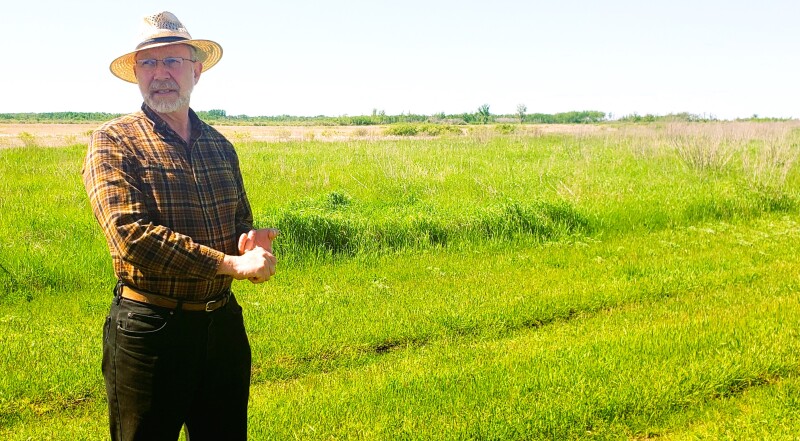In a quaint corner of Polk County, Minnesota, retired hydrologist Tim Cowdery conducted pioneering research that would ultimately alter the course of conservation history. His groundbreaking study, conducted over a decade at the majestic Glacial Ridge National Wildlife Refuge, unveiled a treasure trove of insights that would reverberate across the globe.
Nestled in the pristine expanses of northwest Minnesota, Glacial Ridge emerged as the beacon of hope amidst a tumultuous era dominated by a relentless pandemic. The enchanting beauty of the refuge, envisioned as the largest prairie-wetland restoration project in United States history, stood as a testament to the unyielding spirit of preservation.
It was not until the spring of 2021, nearly two years after the publication of Cowdery’s comprehensive report, that the world bore witness to the transformative findings born out of Glacial Ridge’s restoration. Titled, “The Hydrologic Benefits of Wetland and Prairie Restoration in Western Minnesota-Lessons Learned at the Glacial Ridge National Wildlife Refuge 2002-15,” the report encapsulated a saga of resilience and rejuvenation.
Recently, in a poignant homecoming, Cowdery graced the hallowed grounds of Glacial Ridge, rekindling memories of a bygone era when his research blossomed into a beacon of hope for conservation enthusiasts worldwide. The Nature Conservancy, in a heartwarming gesture, orchestrated a captivating field tour to showcase Cowdery’s remarkable legacy – an opportunity long overdue, courtesy of the disruptive pandemic.
The tale of Glacial Ridge unfolds like a lyrical sonnet, chronicling the metamorphosis of a once-neglected expanse into a vibrant sanctuary teeming with life. Initially, the refuge was a mosaic of aspen groves, pristine prairies, and serene wetlands before succumbing to the ravages of agriculture.
TNC’s audacious quest to reclaim the land’s lost glory was underpinned by a desire to restore natural water movements and rejuvenate the indigenous plant communities that once flourished. With unwavering support from the U.S. Department of Agriculture’s Natural Resources Conservation Service, the ambitious restoration project bore fruit, culminating in a symbiotic blend of nature’s bounty and human ingenuity.
Cowdery’s meticulous hydrology study emerged as a beacon of scientific excellence, shedding light on the transformative impact of wetlands and tallgrass prairies on water quality, groundwater recharge, and flood mitigation. His profound findings underscored the significance of ecological restoration in fostering sustainable ecosystems and mitigating environmental risks.
As the sun sets on Glacial Ridge’s 20th anniversary, a radiant tapestry of hope and renewal adorns the landscape, beckoning weary travelers to bask in its splendor. The refuge, now a thriving ecosystem brimming with myriad avian wonders and vibrant flora, stands as a testament to the power of conservation and collective stewardship.
In the heart of Glacial Ridge, whispers of the past mingle with the promise of tomorrow, beckoning all who dare to dream of a harmonious coexistence with nature’s treasures. With each passing year, the refuge’s allure grows stronger, enchanting wanderers with its kaleidoscope of colors and symphony of life.

